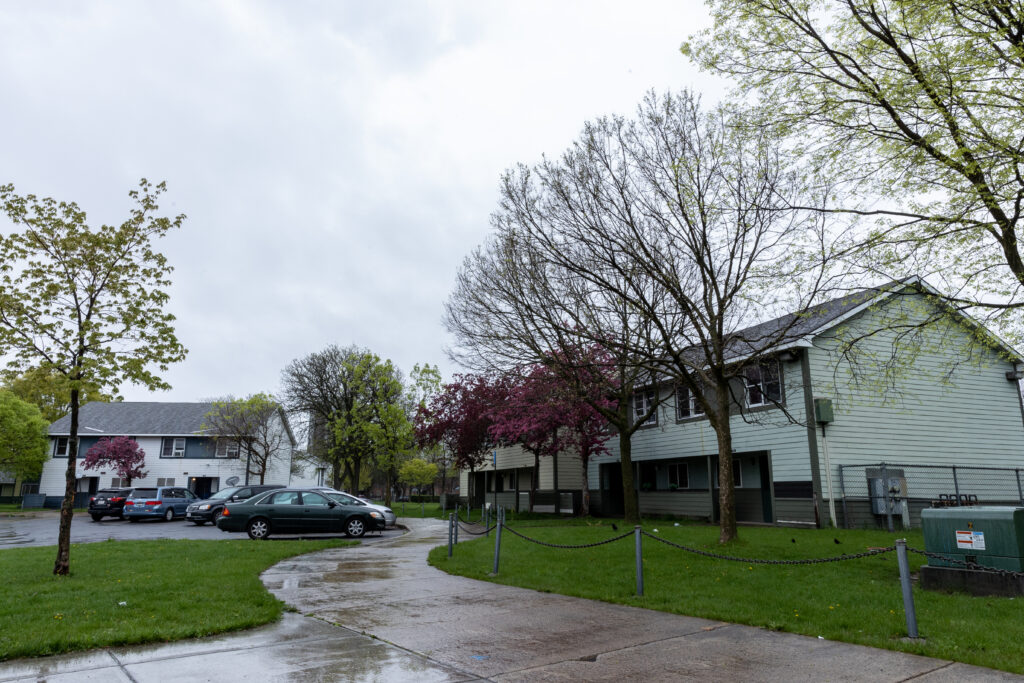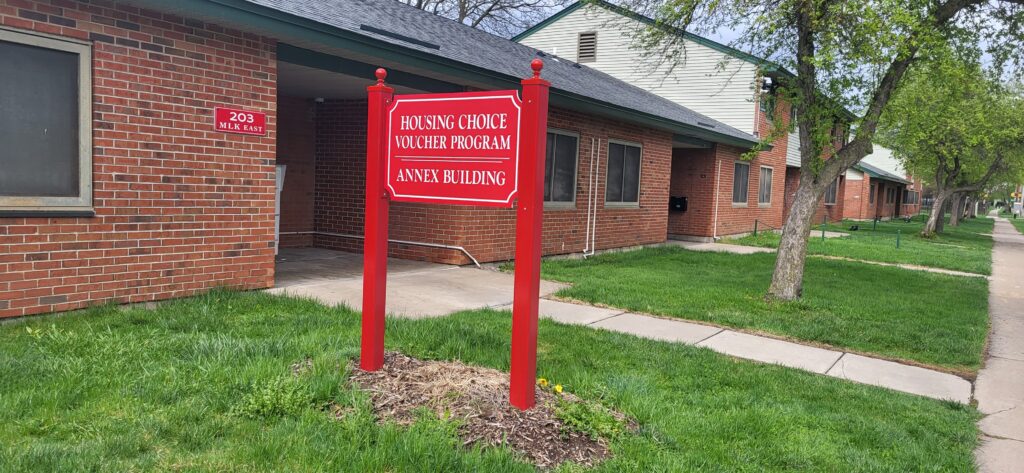Community activists worry that the plans to replace McKinney Manor and Pioneer Homes with affordable housing will put many of the new units out of reach of current residents.
By Timia Cobb
The Syracuse housing study released in March found that more than a quarter of all households in the city have incomes of less than $35,000 a year. Those residents often rent their homes in buildings in desperate need of repair, like much of the city’s housing stock.
But fixing up those properties often doesn’t make economic sense, the report found. And when investing does make sense, the refurbished homes can become unaffordable to the original inhabitants.
People like Sharon Sherman, executive director for the Greater Syracuse Tenants Network, want to prevent the loss of low-income housing created by this cycle. In an interview with The Stand, Sherman called for clarity regarding the Syracuse Housing Authority and Blueprint 15 redevelopment of McKinney Manor and Pioneer Homes. Those developments provide more than 1,000 low-income units, serving more than 4,000 people.
Blueprint 15 is a nonprofit that brings together several organizations focused on the redevelopment of an area dubbed “the new 15th Ward.” It has teamed with the the housing authority, which administers Section 8 and other federal housing programs locally, to offer housing vouchers to help residents move during construction and then allow them to move back when construction is complete.
But there are restrictions. Residents who wish to move into other SHA housing, for instance, can’t have any missed rent payments or have other violations. And even residents in good standing may have to wait for the right apartment to become available.
“It all depends upon the natural turnover of apartments in a building, whether someone gets evicted or whether someone moves out voluntarily, and so they will be put people on the waitlist,” SHA Executive Director Bill Simmons said.

While some residents may have to be put on the waitlist, Simmons said SHA housing “tends” to have enough units in the public housing to accommodate residents that will be going through this process.
But Sherman fears some families will get left out. And she says that in the long run, more families will have a hard time staying in the city unless the new housing is dedicated as low-income and not just as affordable.
The buzzwords might sound similar, but as Sherman explains, they are not. Low-income housing has a specific definition and usually focuses on people below 30% of the median income. For families, the median household income in Syracuse is $40,490, according to U.S. Census Bureau, and for individuals, it’s a little over $24,000.
Affordable housing, meanwhile, simply means that the housing is less expensive than the typical unit in the market. But that doesn’t mean people in poverty can afford those units. In fact, in most cases people qualify for affordable housing options even if they make up to 80% of the median income in a city. In Syracuse, the median income in 2021 was about $24,000 per person and about $40,000 per household, according to U.S. census data.
Blueprint’s frequently asked questions page states that the new complexes will be affordable housing, not low-income.
Simmons says McKinney Manor will be converted from low-income to a mixed-income complex, with a third of the units designated for residents who make anywhere from 30% to 80% of the area’s median income. Retuning residents who recieve vouchers will make up 40% of the units and will have to pay 30% to 40% of their income in rent, he said.
In Blueprint 15’s efforts to relocate SHA residents as painlessly as possible, they have hired relocation specialists to help with moving costs and questions.
Blueprint 15’s FAQ states that rents won’t change for returning residents – unless their income has gone up in the intervening time as subsidized housing rents are determined by income. But if the number of low-income units falls, what will that mean for the long-term viability of poorer residents being able to afford rents in the area.

“They’re not planning for the grandchild, when your grandchild needs housing because they’re poor,” Sherman said. “It won’t be low-income housing. So they’re not transparent.”
Joshua King, a local activist who was also part of Mayor Ben Walsh’s education and transition team when he was first elected, worries the lack of transparency has fueled disinformation and left residents unaware of what’s happening to the housing in their neighborhood.
“We’re an instant gratification kind of people,” King said. “ So, you know, more often than not, we see what’s happening as isolated versus how it’s interconnected to decades of decision-making that may or may not have been in the better interest of the people. And, so there’s a huge disconnect when it comes to sharing information.”
King is referring to the legacy of displacement and erasure of Black and low-income homes in Syracuse. The historically Black 15th ward was largely demolished in the 1960s during the construction of I-81, displacing Syracuse’s working-class Black residents.
Since then, Syracuse continues to lose low-income housing, such as Kennedy Square and Cherry Hill apartments.
King and Sherman fear that if Syracuse continues to accept more redevelopment projects like Blueprints, low-income families will be priced out of the city.
“I hear them saying like, ‘Oh, we want to undo you know the effects of 81 and what it did to that community,’ they’re doing the same exact thing just in reverse,” King said.
Their worries are also justified by the Housing Study. In the report, it states there is a gap between what it takes to fix up a property and what the renovated property would ultimately be worth, but if homeowners and landlords were more willing to invest, similar to SHA’s and Blueprint 15’s plans, then the city would become a more desirable place to live.
But that could be disastrous for the families living in those properties. If their rents increase, they would be displaced, unless the city comes up with an estimated $75 million a year to help subsidize their rents.
“Lower-wage renters may struggle with higher rents (if subsidies aren’t expanded),” writes the report’s authors, Maine-based CZB LLC. “Lower-wage households may struggle to compete with demand from higher-wage households.”
King supports the interstate’s removal through the city, but thinks the redevelopment needs to be handled differently and in coordination with improvements to other systems, like public transportation.
“That community is not being rebuilt for the people who live there currently,” he said. “Surely some folks will return, and I’m sure that that will be great for them. But what does that mean for everyone else?” King asked. “We already know that things like transportation are a huge issue. So, we relocate all of these people into these suburban or even rural communities. How do they get around in a system that in and of itself is broken?”
Sherman shares some of the same concerns and fears the fate of the “new 15th ward” will be as tragic as that of the original 15th ward.
“In the end,” Sherman said, “the voices of the people living there are not going to be heard.”
Timia Cobb is a master’s student at the Newhouse of Syracuse University. Her work for The Stand is supported by the Knight Center and its Combatting Disinformation in Communities of Color grant program.
 The Stand
The Stand


